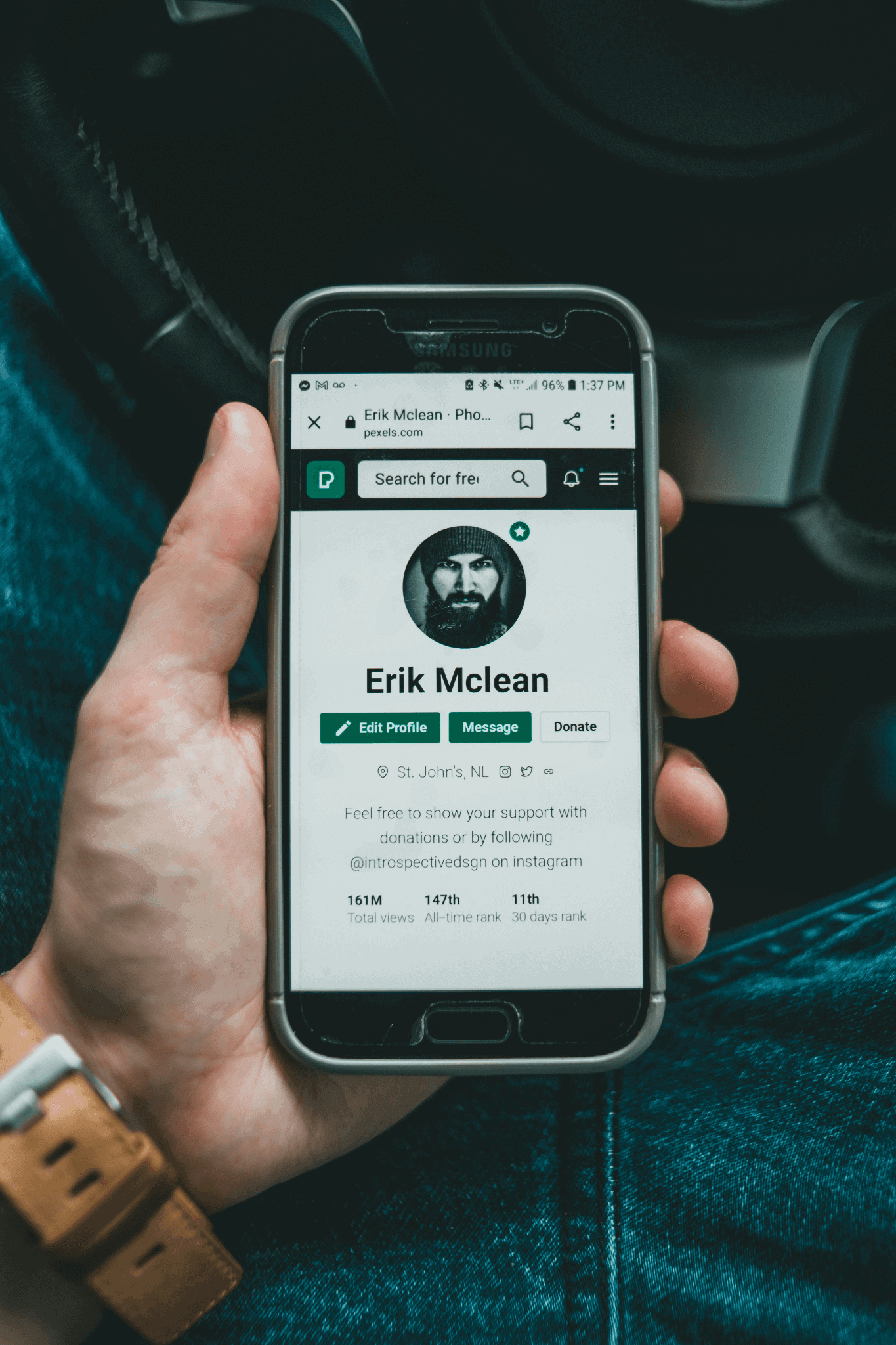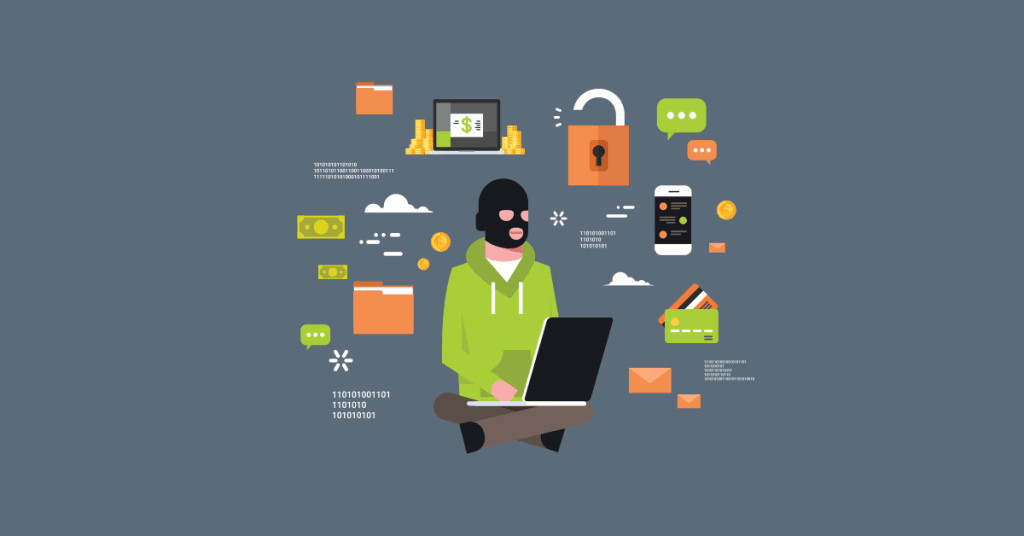In the internet’s wild frontier, finding all kinds of wondrous and truly extraordinary material is possible. But it can be a tricky place too. Not all is as it seems. This is particularly the case with social media.
The democratic nature of the medium has led to a multitude of people being able to access it and post away. But not all of these people are who they claim to be. Welcome to the world of social media impersonation.
Thankfully, there are several easy-to-deploy ways to spot the imposters. This article will explore these and will also show you what to do about imposters once you’ve ID’d them.
But first, let’s start by laying down a definition.
What is social media impersonation?

Free to use image from Pexels
Social media is unbelievably good for reaching out and creating leads. One of the magical elements of social media is that you can end up communicating with literally anyone across the globe, from a kid in Caracas to a celeb in Santa Monica. However, the downside is that you could be dealing with anyone, regardless of what their profile says.
This is because, unfortunately, social media is an easy environment for the fake to operate in. The remoteness can act as a veil that obscures a poster’s real identity.
But why do they do it?
- To appropriate money through a scam
- To disseminate false information and hate in order to promote disharmony
- To harass individuals and groups
- To steal identity and gain access to confidential data
- To leave negative reviews on a product or service
- To annoy the original account holder or to attack their reputation
What does it mean for brands?

Free to use image from Pexels
For brands, social media impersonation can spell very bad news. There are two chief ways that fake accounts can impact brand reputation and hinder effective revenue generation.
Firstly, they can impersonate the brand itself, with hugely damaging consequences if they post material that is completely at odds with the original’s message and values.
It’s a huge negative for the customer and the brand. Social media can boost brand awareness on the one hand, but it can also wreck a brand image.
Secondly, they can impersonate an individual who apparently decides to follow a brand. You may think this boosts the brand’s following, but this follower can just sit there not doing anything, not reading the brand’s posts, and lowering the engagement rate as a result. Multiply this by numerous such fake accounts and it can really hurt a brand.
For instance, of the approximately 223.5 million followers that Kylie Jenner has on Instagram, it’s reckoned that 40% are fake. That’s a massive contingent of possibly harmful presences in her following.
An additional consequence of faking it is that a business beset with fake followers will find it more difficult to practice customer segmentation. So, for several reasons, it’s hugely important that we learn how to spot social media impersonators. Let’s turn to that now.
How do they do it?
Here are some common approaches used by social media impersonators.
Profile cloning

Free to use image from Pexels
This is possibly the most straightforward approach. The impersonator takes the original authentic profile and clones the profile picture and accompanying information. This cloned identity is then used to reach out to the original profile owner’s contacts in order to scam them or spread disinformation. It can be tricky for the recipient to detect the inauthenticity of the clone’s messages.
Spear phishing
This is a refinement of the usual phishing technique that uses information gleaned from social media accounts to ramp up credibility. By referencing personal information, a fake can hope to elicit financial or other data from their victims just by appearing to be connected to somebody they know. Quite often a fake will claim that an individual they both know is in need of emergency funds, for instance.
Deep faking
Lately, there’s been a lot of talk about deep fake technology. It’s a very powerful tool that we’re only just beginning to understand; therefore, our guard is not yet fully up against it. The majority of people tend to believe what they see. And deep fakes use AI and machine learning to produce results that look (and sound) very convincing. Victims receiving seemingly genuine videos from somebody they know and/or trust can find themselves fooled into handing over funds.
Social engineering
This is a broad term that covers a range of approaches. Put simply, it refers to the means by which fakes influence behavior by manipulating their marks. This manipulation is made more effective by the fake posing as a friend or authority figure, and citing urgent reasons why the victim should be compliant with the fake’s request.
With techniques such as the SPIN sales method utilizing elements of the potential customer’s data in order to establish a connection and product need, it can be confusing for an individual to know if they’re communicating with a bona fide seller or not.
All these techniques can deploy against individuals and against businesses. They are responsible for a great deal of unhappiness in both realms, and can wreck lives and operations if left unchecked. So, let’s look now at what you can do about them.
How to spot and prevent impersonation
Here’s what you need to look out for in order to be in with a chance of detecting impersonators.
Inspect the profile picture

Free to use image from Pexels
Take a look at the profile picture associated with the account. Fakes tend to use two common approaches: avatars and symbols rather than photos, or stock images of random people. If they’re impersonating brands, they might have a low-resolution version of 3D logos and brand icons.
Quite often, these accounts aren’t created with the care that one might expect. This can be because it’s a high-volume activity, with numerous accounts created, often with poor automation tools. Or it can be because the agent behind the fake isn’t very adept.
In any case, if something doesn’t look right about the photo, it can be a good idea to whack it into Google and see if it’s associated with a widely-reported scam.
The name game
Look at the name of the account. Does it seem suspicious? Is it spelled correctly? Does it follow the same form that’s normally used by that person?
If you’re looking at a celebrity, this is easy to ascertain. For instance, research tells us that Mark Zuckerberg sticks to this form of his name. So if you come across an account claiming to be that of the Meta CEO, going by the handle Marky Mark Zuckerberg, then you know that this is a fake account.
If you’re dealing with an individual you’ve never come across before, search for that individual online and see how they’re referred to elsewhere. Look at their other social media accounts and see if their data is all the same or if there are telltale inconsistencies.
You can then reach out to that person and let them know that you think they’ve been impersonated. They’ll appreciate your assistance, and you may well add a new customer to your books.
3. Follow the following

Free to use image from Pexels
The number of followers is a key profile component that can indicate something is amiss. Again, if it’s a well-known individual, then you can smell a rat quite quickly. If they claim to be Rihanna but they only have 500 followers, then either Ms Fenty has undergone a sudden calamitous drop in popularity, or you have a fake on your hands.
It’s the same with large businesses. If you’re followed by an instance of IBM that has followers in the tens, then take a closer look.
It doesn’t have to be that stark a mismatch between what you might expect and what you actually observe. For instance, say your following includes the purveyor of the best PBX system for small business, you’d expect them to boast a fair level of popularity, so to have a following in single figures is an alarm bell.
For non-celebrity individual accounts, it’s a harder task to ascertain authenticity, but perfectly surmountable. Again, look for evidence of that individual on other social media platforms. If they’re a big deal on Facebook, it’s likely they’ll be pretty popular on X or other channels too. Massive discrepancies can flag concerns.
In general, fake accounts tend to have fewer followers than authentic accounts. This is because they don’t tend to put out much in the way of content that others would really want to sign up to. So, you should look at unpopular profiles with suspicion.
4. Controversial content
Look at the content curation in evidence. Fake accounts can often be associated with certain kinds of content. This can be extreme material, for instance, aimed at whipping up reactions and fanning discontent. It can also be relatively unsophisticated material, using recycled phrasing and images rather than anything original.
Even more of a red flag is the complete absence of any posts at all. If all there is are tumbleweeds, then your antennae should be twitching.
Have a look also at the interactions between the account holder and others. If you spot a high incidence of requests for investment or other solicited commitments, then the chances of this being an impersonator are too high to ignore.
The question you may now be asking is, how do you monitor all this? This is where AI can help. Machine learning is getting better at spotting the fruits of other machine learning so that AI can point the finger when it comes to deep fakes and other such faker techniques. Use an automated tool such as Pasabi fake profile detection, for instance, and have it running continuously in the background to ensure you stay vigilant but are saving time and effort.
Now that we’ve seen how to spot impersonators, let’s explore the steps that you can take to stick it to the fakers.
Raise the alarm

Free to use image from Unsplash
If you suspect fakers have been at work, report it to the platform concerned. It’s in their interest to stamp out this activity. It reflects badly on them to have a high proportion of impersonation in evidence, so they should respond quickly and decisively. Incidentally, always report rather than communicate directly with the faker, regardless of how much you want to confront them. They’re experts at manipulation, so stay clear.
Unfollow
The next step on spotting a suspicious account is to unfollow it (should you be following it in the first place). Treat it like a contagion and avoid it at all costs. Nothing good can come from further association.
Tell your customers
If a social media impersonator claims to be your business, then you need to let your customers know so that they don’t fall for any spurious approaches. You can do this by posting updates on your site, on socials, or, if you feel it warrants it, an email to all relevant customers. This is the least you can do for your customers, and they’ll value your intervention. This is likely to boost consumer trust in your brand.
Educate
You should teach colleagues and customers what to look out for going forward. This goes for all employees, but especially those responsible for social media operations. If we’re all better at spotting impersonators, their potency will diminish considerably. Again, customers in particular will appreciate the care you’re taking to prevent their being defrauded, so it all helps your profile as well as protecting them from abuse.
Some final tips

Free to use image from Unsplash
Businesses can do the following to help stay secure from impersonators:
- Use robust password policies and 2FA routines.
- Use consistent branding across all platforms.
- For businesses managing Shopify sales, it’s essential to verify and secure every customer interaction. This step is critical to prevent impersonators from undermining customer trust and disrupting transactions.
- Keep confidential information off-limits, no matter what it is, from personal details about the CEO to sensitive data concerning the business’ data processing pipeline.
- Communicate regularly and with a consistent tone with your customer base.
- Keep an ear out to monitor what your online presence is doing (you can use automated social listening tools here).
- Consider buying a verification badge to indicate authenticity.
- Ensure that fulfillment strategies are reliable and aligned with brand communication to reinforce trust and authenticity in customer interactions.
Keeping your socials safe
There’s a huge amount that businesses can gain from social media. But there’s a lot of harm that can be done too. Using the pointers we’ve given you here, you should be in a good position to keep your business safe from fakers, both in terms of those seeking to impersonate your business account and those who are trying to infiltrate your following.
Vigilance is all-important. But it would be extremely taxing to have to be all-eyes and all-ears all the time. That’s why automation and machine learning is so important, so don’t forget to introduce it into your security operation. In the battle against the fakers, AI can be one of your biggest allies.


